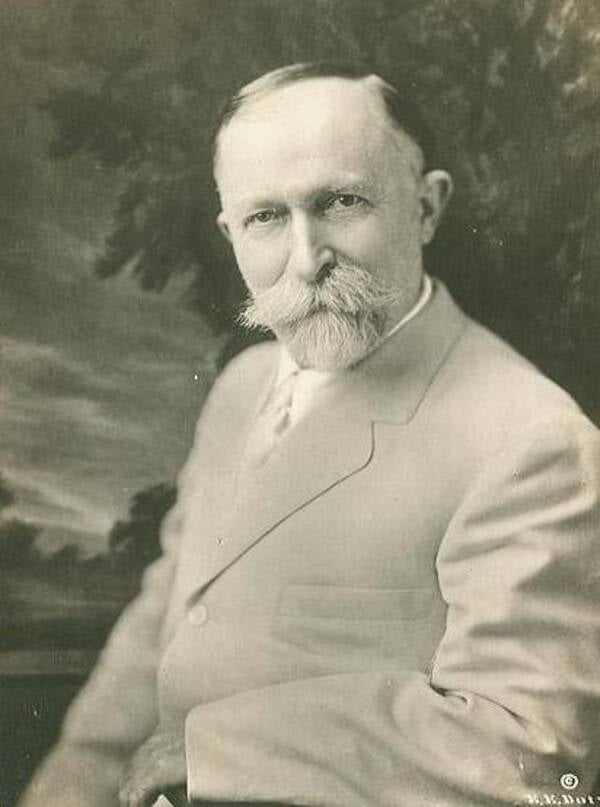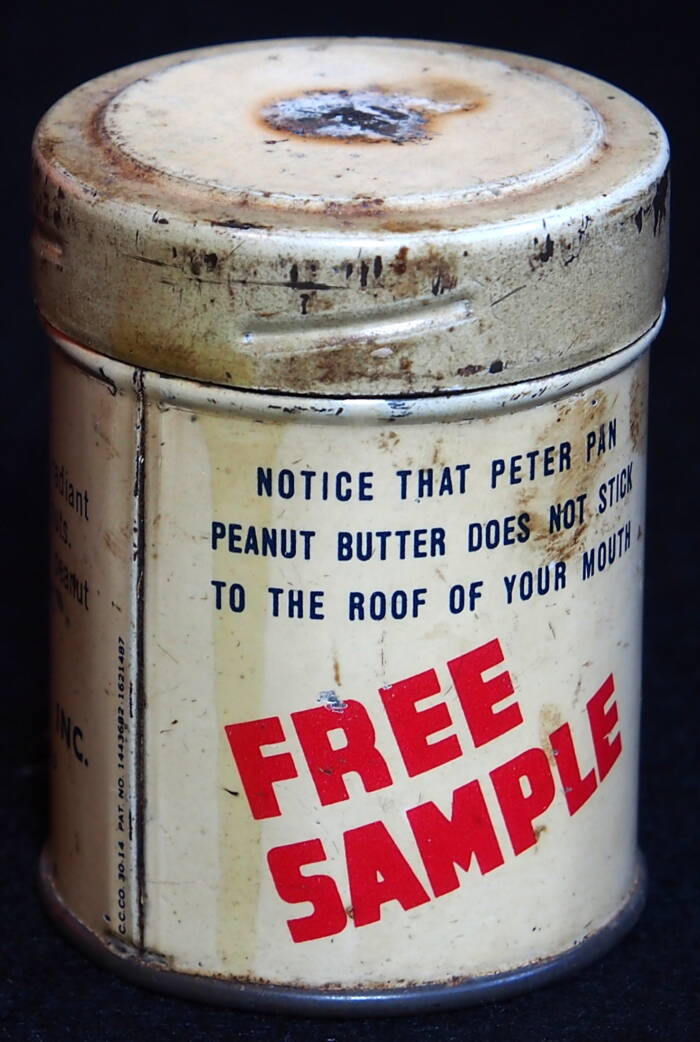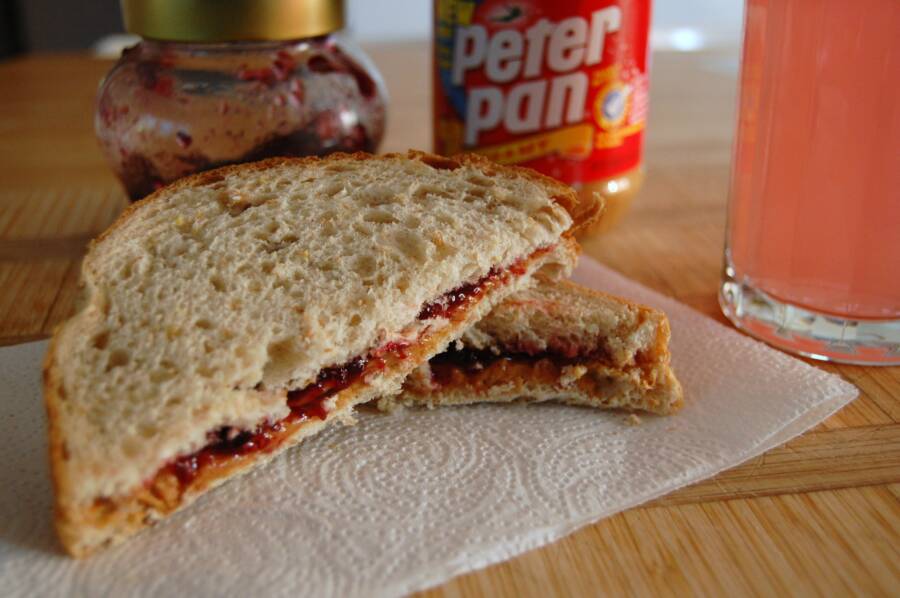From Marcellus Gilmore Edson's game-changing peanut paste to John Harvey Kellogg's famous patent, meet the men credited with inventing peanut butter.
Many Americans believe that George Washington Carver invented peanut butter. But while the pioneering agricultural scientist did create hundreds of new ways to use peanuts, peanut butter was actually not one of them. So who invented peanut butter? When was it first created? And how did it become one of the most iconic foods in the United States?
Interestingly enough, the oldest written references to the product trace back to the Aztecs of Mesoamerica and Incas of South America. However, this version simply involved grinding roasted peanuts into a paste, meaning that it was quite different from the creamy spread we know today.
Some say that physician John Harvey Kellogg was the man who invented peanut butter since he filed the first patent for the product in 1895. Others claim that entrepreneur George A. Bayle deserves the credit, since he was the first to market the product as a snack food in the mid-1890s.
Yet others maintain that George Washington Carver should be considered the “father” of peanut butter considering the huge role he played in popularizing it across America, starting with his famous 1917 pamphlet How to Grow the Peanut: And 105 Ways of Preparing It for Human Consumption.
And incredibly, these aren’t the only names suggested during debates about who invented peanut butter. Go inside the long, sticky history of one of America’s favorite sandwich spreads below.
The Early History Of Peanut Butter

St. Louis Park Historical SocietyThe invention of peanut butter is typically associated with the modern-day United States, but the product’s history actually traces back to the Aztecs of Mesoamerica and Incas of South America.
The Aztecs of Mesoamerica and the Incas of South America were two of the first groups of people to grind roasted peanuts into a paste, making an early version of peanut butter. Incredibly, some experts have suggested that the first peanut paste might’ve emerged even before those groups existed, potentially among Indigenous people in modern-day Peru during the Early Intermediate Period, which stretched from 200 B.C.E. to 800 C.E.
“Peanuts, like most seeds and grains, store exceptionally well in cool and dry environments and, when kept in the pod, may last between eight and ten months. As they are well suited for long term storage, they may have been useful as agricultural tribute or tax,” researchers stated in a study that was published in the Journal of Ethnobiology in 2018.
It’s difficult to determine the exact date that peanut butter was invented. But the Inca people were certainly aware of the nutritional value of peanuts and ate them in several different styles, including roasted, salted, boiled, and, of course, mashed into a paste that’s now seen as a precursor for today’s peanut butter. So this paste must’ve emerged sometime from the 1200s to the 1500s — the time period when the Inca flourished.
(Interestingly enough, the Inca may have enjoyed peanuts for reasons beyond basic sustenance, as evidence shows that “elites may have included peanuts in ritual feasts” and they might have also wanted to “highlight their access to the sacred” during especially bountiful harvests.)
Meanwhile, the Aztecs — who thrived in modern-day Mexico from the 1300s to the 1500s — consumed peanuts in very similar fashions. At some point during their reign, they also ended up grinding peanuts into a paste. But despite these early paste versions of the product, peanut butter as we know it today was still several centuries away from being invented.
The Men Who Invented Peanut Butter

Wikimedia CommonsPhysician John Harvey Kellogg is often credited as the man who invented peanut butter, but not everyone agrees.
There are several scientists, doctors, and businessmen who can be credited with the development of peanut butter — and the equipment that was eventually required to mass-produce it. Canadian chemist Marcellus Gilmore Edson was the first to get a patent for a peanut paste in 1884.
According to the Montreal Gazette, this paste was meant to help the “dentally challenged,” who struggled to chew food. Edson’s process involved roasting peanuts and grinding them between surfaces heated to a temperature of 100 degrees Fahrenheit. When the product cooled, it was said to have “a consistency like that of butter, lard, or ointment.”
Though Edson’s peanut paste would never reach the popularity of later versions of peanut butter, he may have unwittingly predicted the future desserts that could be made using such a product, declaring that his paste could be combined with sugar “to form sweetmeats and candy.”
About a decade later, in the mid-1890s, peanut butter as we know it today began to truly take shape. American physician John Harvey Kellogg filed the first patent for peanut butter in 1895. Because of this, many say he should be recognized as the man who invented peanut butter.

Wikimedia CommonsA sample of Peter Pan peanut butter, likely dating back to the early 20th century.
According to The New Yorker, Kellogg started out by introducing peanut butter as a healthy food product for patients at his sanitarium, the Western Health Reform Institute. He then shared it with wealthy guests at the institute, who enjoyed it and made it popular among the upper classes.
But Kellogg, known to have eccentric ideas, also had another reason for pushing peanut butter. A staunch anti-masturbation activist, Kellogg believed that meat was “sexually inflammatory” for people who ate it and that peanut butter was a more virtuous option as a protein source.
Virtuous or not, Kellogg’s peanut butter was one of the first popular versions of the product among wealthy Americans. But notably, he switched from roasted peanuts to steamed peanuts, meaning that the taste of the spread would be unrecognizable to most peanut butter fans today.
That’s a big reason why some think that a different man deserves to be recognized as the person who invented peanut butter: George Bayle. A St. Louis businessman and entrepreneur, Bayle was the first to market and sell peanut butter as a snack food in the mid-1890s. It’s also said that Bayle’s creation bore a far closer resemblance to today’s peanut butter.
However, it wasn’t until the 20th century that modern-day peanut butter was truly born — and rose in popularity across the United States.
How The Spread Took Off Across America

Wikimedia Commons/U.S. Department of AgricultureGeorge Washington Carver was not the person who invented peanut butter, but he played a big role in popularizing it.
Not long after Kellogg and Bayle released their creations, other men became inspired to improve and quicken the production of peanut butter — as early techniques often involved using a mortal and pestle or a meat grinder.
John Lambert, a former employee of Kellogg’s, decided to create his own company that would develop industrial-strength peanut-grinding machines. But ultimately, Lambert’s rival, machine manufacturer Ambrose Straub, was given a patent for one of the first peanut butter machines in 1903.
The machines would inspire Missouri farmer C.H. Sumner to exhibit peanut butter at the 1904 St. Louis World’s Fair. Sumner intrigued countless guests by talking about how peanut butter was rich in protein and could be a great option for people who got sick from eating meat or struggled to chew meat.
Later that same year, the Beech-Nut Packing Company leapt into the promising new market and became the first nationwide brand to sell peanut butter. Before long, many other local and national brands were marketing their version of the product — and even Heinz sold peanut butter.
By 1919, companies across America had reportedly sold about 158 million pounds of peanut butter, approximately five times the amount that had been sold a decade earlier. Clearly, it was a huge hit with the public.
Around that same time, George Washington Carver was also making a splash as an agricultural scientist and inventor, especially when it came to peanuts. A couple of years after World War I ended, Carver was asked to present his discoveries to the United Peanut Association of America and to help them get a protective tariff from competitors in other countries around the world.
He succeeded, and though he wasn’t the person who invented peanut butter, his excitement over his peanut-related discoveries helped him achieve fame — and promote peanut butter to people all over the U.S.
Peanut Butter In Modern Times

jpellgen (@1105_jp)/FlickrThe average American child eats 1,500 peanut butter and jelly sandwiches before graduating high school.
As time went on and peanut butter became more and more popular, a number of inventors came up with creative ways to improve the product. According to the Smithsonian Magazine, one crucial improvement was the addition of a chemical process called partial hydrogenation.
Patented by a California man named Joseph Rosefield in 1921, this process helped make the spread more stable, allowing it to be easily transported across the United States and left alone on grocery store shelves for long periods of time without spoiling. Rosefield would later go on to found the famous peanut butter brand Skippy in the 1930s.
The commercialization of peanut butter — and its decrease in price — came in handy for many families during the Great Depression who couldn’t afford to buy meat and needed an alternative protein source. On a lighter note, the introduction of commercially sliced bread around the same time paved the way for the popularization of peanut butter and jelly sandwiches.
But the popularity of peanut butter really took off during and after World War II. Countless tins of hydrogenated peanut butter were shipped overseas for hungry American soldiers. And then, after the war, a nationwide meat shortage meant that many average citizens had to turn to a different protein source for their meals, and many opted for peanut butter.
To this day, peanut butter remains a staple for countless people across the United States. Though people in other countries also enjoy the product, Americans eat far more peanut butter than any other nation — an estimated 700 million pounds of peanut butter per year. And as they may or may not know, they have a number of innovators to thank for that delicious invention.
After reading about the men who invented peanut butter, learn about who invented the internet. Then, find out who invented pizza.





